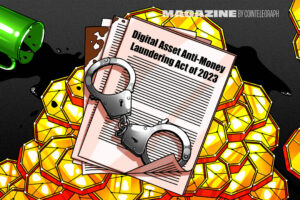
Bitcoin (BTC) is forecasted to be a less enticing payment choice by cybercriminals as regulations and tracking technologies improve, thwarting their ability to safely move funds.
Cybersecurity firm Kaspersky in a Nov. 22 report noted that ransomware negotiations and payments would rely less on Bitcoin as a transfer of value as an increase in digital asset regulations and tracking technologies will force cybercriminals to rotate away from Bitcoin and into other methods.
As reported by Cointelegraph, ransomware payments using crypto topped $600 million in 2021 and some of the biggest heists such as the Colonial Pipeline attack demanded BTC as a ransom.
Kaspersky also noted that crypto scams have increased along with the greater adoption of digital assets. However, it said that people have become more aware of crypto and are less likely to fall for primitive scams such as Elon Musk-deepfake videos promising huge crypto returns.
It predicted malicious actors will continue trying to steal funds through fake initial token offerings and nonfungible tokens (NFTs) and crypto-based theft such as smart contract exploits will become more advanced and widespread.
2022 has largely been a year of bridge exploits with more than $2.5 billion already pilfered from them as reported by Cointelegraph.
The report also noted that malware loaders will become hot property on hacker forums as they are harder to detect. Kaspersky predicted that ransomware attackers may shift from destructive financial activity to more politically-based demands.
Related: Hackers keeping stolen crypto: What is the long-term solution?
Back to the present, the report noted an exponential rise in 2021 and 2022 of “infostealers” — malicious programs that gather information such as logins.
Cryptojacking and phishing attacks have also increased in 2022 as cybercriminals employ social engineering to lure their victims.
Cryptojacking involves injecting malware into a system to steal or mine digital assets. Phishing is a technique using targeted emails or messages to lure a victim into revealing personal information or clicking a malicious link.
















